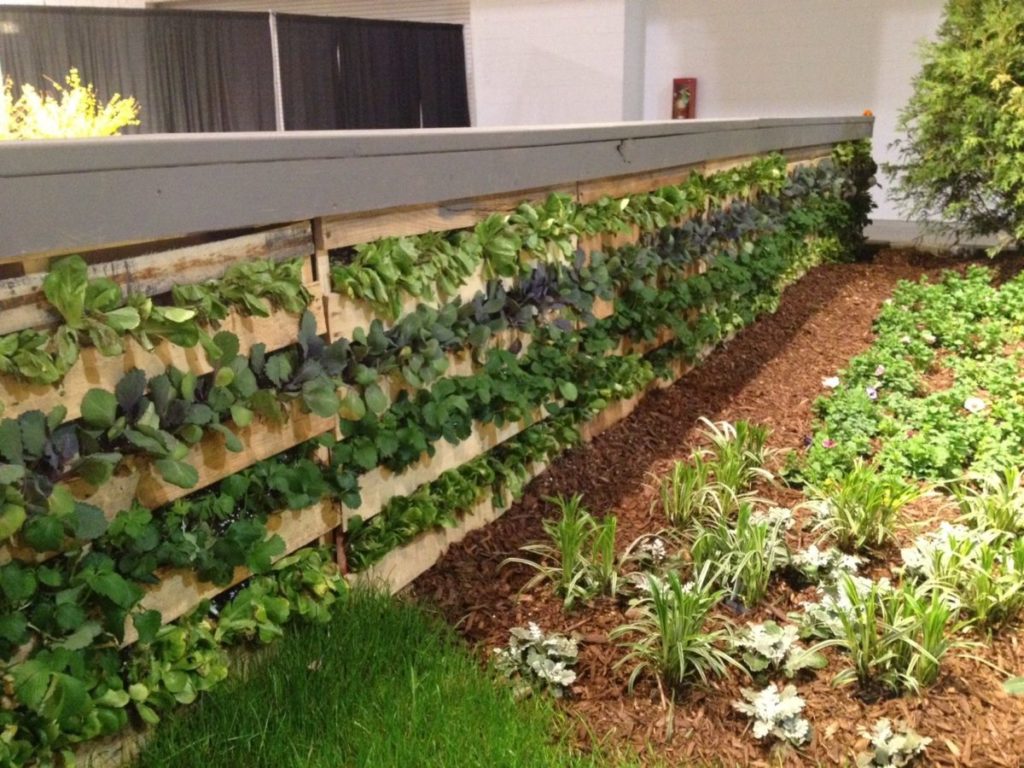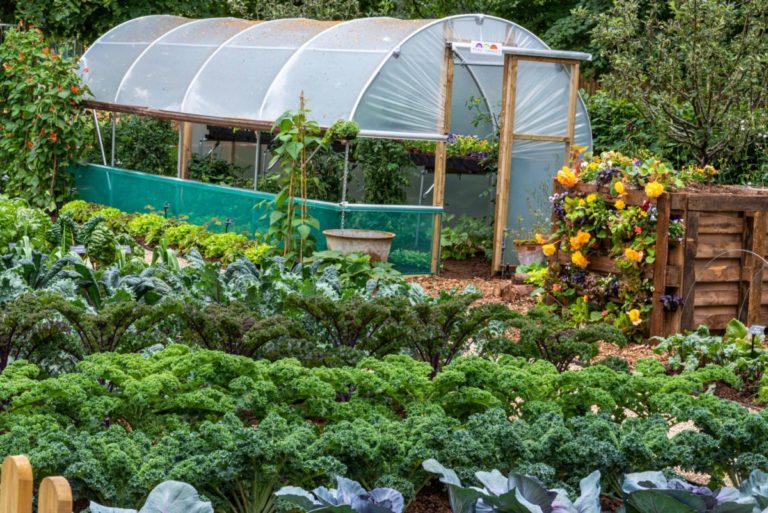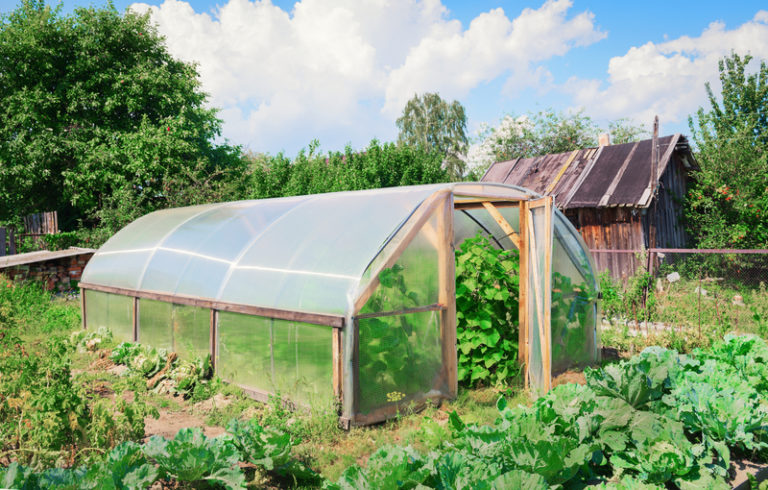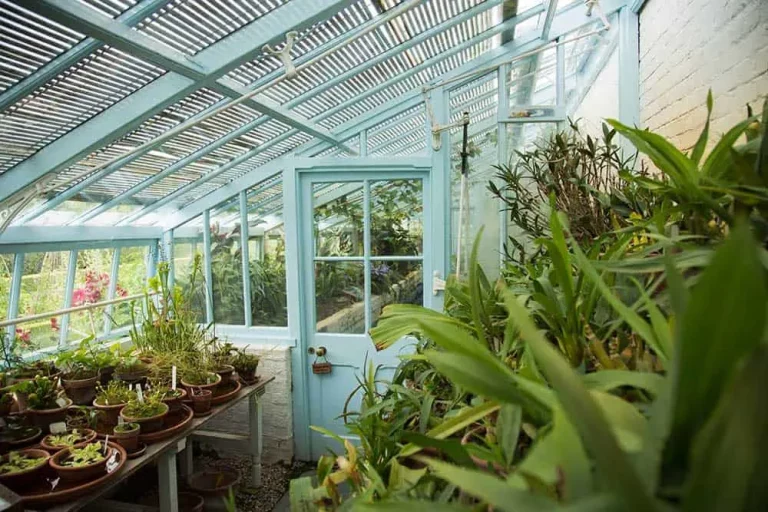Building a vertical vegetable garden is an innovative way to maximize your growing space while minimizing the amount of land you need.
By using wall-mounted planters or trellises, you can grow a variety of delicious vegetables like tomatoes, peas, cucumbers, and squash vertically, saving valuable horizonal space for other plants or features in your garden.
With proper planning and execution, a vertical vegetable garden can provide bountiful harvests while taking up much less room than a traditional garden layout.
So let’s get started on building one today!
Choose the right location
Make sure that the location you choose for your vertical vegetable garden receives sufficient sunlight and has good drainage. Avoid planting in low-lying areas or areas with standing water.
Look for an area that receives at least 6 hours of direct sunlight per day, as this will promote healthy plant growth and fruit production.
Avoid planting in low-lying areas or areas with standing water, as these can lead to waterlogged soil and root rot.
Instead, select a location with good drainage, such as a south-facing wall or a raised bed.
Ensure that the area is protected from strong winds and is close to a water source for easy irrigation.
By choosing the right location, you’ll be off to a great start in growing a thriving vertical vegetable garden.
Select the right materials
Use materials that are durable and can support the weight of the plants, such as wooden or metal frames, and a breathable fabric such as burlap or netting for the growing medium.
When it comes to selecting the right materials for your DIY green wall, durability and weight capacity are important factors to consider.
Choose wooden or metal frames that can support the weight of the plants, as well as a breathable fabric such as burlap or netting for the growing medium.
Burlap, for instance, is a natural fiber that allows for proper airflow and water drainage, preventing over-watering and root rot.
It is lightweight and easy to work with, making it an ideal choice for DIY projects.
Netting, on the other hand, is a more durable option that can withstand the weight of heavier plants, making it perfect for larger green walls.
By selecting the right materials, you can ensure that your green wall will thrive and remain healthy for years to come.
Plan for proper drainage
Make sure the vertical garden has proper drainage to prevent waterlogged soil and root rot. Use a well-draining soil mix and include drainage components such as PVC pipes or stone wool.
Proper drainage is a important aspect of any vertical garden, as it helps prevent waterlogged soil and root rot.
To ensure proper drainage, use a well-draining soil mix that is specifically designed for vertical gardens.
This type of soil mix is typically made up of a combination of peat, perlite, and vermiculite, which helps to prevent waterlogging and maintain good air circulation around the roots.
Consider incorporating drainage components such as PVC pipes or stone wool into your vertical garden design.
These materials will help to channel excess water away from the roots, preventing it from accumulating and causing damage.
By incorporating proper drainage into your vertical garden design, you can help to ensure healthy plant growth and a thriving, vibrant garden.
Use a trellis system
Utilize a trellis system to support the plants as they grow. This can be made of wood, metal, or plastic and can be adjusted as the plants grow.
Using a trellis system is an excellent way to support your plants as they grow.
A trellis is essentially a structure made of wood, metal, or plastic that provides a sturdy framework for your plants to climb up.
There are many different types of trellises available, so you can choose one that suits your specific needs and the size of your plants.
For example, if you’re growing vines or cucumbers, you might want to invest in a more substantial trellis system that can support the weight of the plants as they grow.
Once you have your trellis system in place, you can start training your plants to climb up it.
This is usually done by gently twining the stems of the plants around the trellis and securing them in place with twine or tape.
As your plants grow, you can adjust the trellis system to accommodate their increasing height.
This can be done by moving the supports closer together or adding additional height to the trellis.
Using a trellis system has several benefits for your plants.
First and foremost, it provides support for the plants as they grow, preventing them from becoming lopsided or toppling over in the wind.
A trellis system can help to improve air circulation around your plants, reducing the risk of disease and pests.
A trellis system can help to increase the yield of your plants by allowing them to grow upwards and produce more fruit or flowers.
Overall, using a trellis system is an excellent way to support your plants and improve their growth and productivity.
Incorporate irrigation
Install an irrigation system to ensure consistent watering and prevent overwatering. Drip irrigation is a highly effective method for delivering water directly to the roots of the plants.
Incorporating an irrigation system into your garden can make all the difference in the health and productivity of your plants.
Drip irrigation is a highly effective method for delivering water directly to the roots of the plants, allowing for consistent watering and preventing overwatering.
This type of irrigation is especially useful for plants that are spaced far apart or for those that are planted in raised beds or containers.
By delivering water directly to the roots of the plants, drip irrigation helps to ensure that the water is being used efficiently and effectively, without waste.
Drip irrigation systems can be easily customized to meet the specific needs of your plants, and can be adjusted as needed based on factors such as soil type, plant type, and weather conditions.
Overall, incorporating drip irrigation into your gardening routine can help to improve the health and productivity of your plants, while also conserving water and reducing waste.
Use a soilless growing medium
A soilless growing medium such as coco coir or peat moss provides better aeration, water retention, and nutrient holding capacity, leading to healthier plant growth and higher yields.
Using a soilless growing medium like coco coir or peat moss can significantly improve the health and yields of your plants.
Unlike traditional soil-based growing methods, soilless media provide better aeration, water retention, and nutrient holding capacity, creating an optimal environment for root growth and plant development.
Coco coir, for instance, is a highly porous material that allows for excellent aeration and drainage, preventing waterlogging and root rot.
Peat moss is rich in organic matter, which slowly releases nutrients to the plant, ensuring a steady supply of essential micronutrients.
With soilless media, you can enjoy faster germination rates, reduced watering needs, and increased crop yields, making them an excellent choice for indoor gardening and hydroponics.
Add nutrients
Use a balanced fertilizer specifically formulated for vertical vegetable gardens to provide essential nutrients for healthy plant growth.
To ensure optimal health and growth in your vertical vegetable garden, it is important to add nutrients to the soil.
A balanced fertilizer specifically formulated for vertical vegetable gardens provides essential nutrients such as nitrogen, phosphorus, and potassium, which are necessary for healthy plant growth.
These nutrients help promote robust leaf growth, increase fruit and vegetable production, and support the overall health of your plants.
Look for a fertilizer that is specifically formulated for vertical vegetable gardens, as these products are designed to provide the necessary nutrients while also considering the unique growing conditions of a vertical garden.
Be sure to follow the manufacturer’s instructions for application rates and schedules to ensure your plants receive the appropriate amount of nutrients at the right time.
By adding nutrients to your vertical vegetable garden, you can promote healthy plant growth and increase your crop yields.
Monitor and maintain
Regularly monitor and maintain the vertical garden, checking for pests, diseases, and nutrient deficiencies. Prune plants as needed to encourage bushy growth and increase yields.
Regularly monitoring and maintaining your vertical garden is important to ensure the health and productivity of your plants.
Check your garden regularly for pests, diseases, and nutrient deficiencies, and take action immediately to address any issues that arise.
Prune your plants as needed to encourage bushy growth and increase yields.
Pruning helps to promote healthy growth by removing any dead or damaged leaves and stems, and encouraging the plant to focus its energy on producing healthy, vigorous growth.
Pruning can help to improve air circulation and reduce the risk of disease.
By regularly monitoring and maintaining your vertical garden, you can ensure that your plants are receiving the care they need to thrive, and enjoy a bountiful harvest.
Want More? Dive Deeper Here!
Hey there! If you’re the type who loves going down the rabbit hole of information (like we do), you’re in the right spot. We’ve pulled together some cool reads and resources that dive a bit deeper into the stuff we chat about on our site. Whether you’re just killing time or super into the topic, these picks might just be what you’re looking for. Happy reading!






